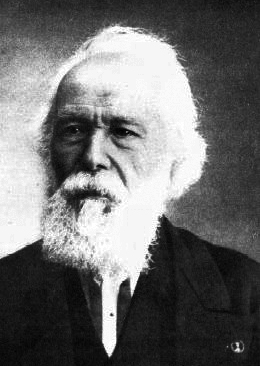Pierre-Joseph van Beneden facts for kids
Quick facts for kids
Pierre-Joseph van Beneden
|
|
|---|---|

Pierre-Joseph van Beneden
|
|
| Born | 19 December 1809 Mechelen, Belgium
|
| Died | 8 January 1894 (aged 84) Leuven, Belgium
|
| Nationality | Belgian |
| Alma mater | University of Louvain |
| Scientific career | |
| Fields | zoology paleontology |
| Influences | Georges Cuvier |
Pierre-Joseph van Beneden (born December 19, 1809 – died January 8, 1894) was an important Belgian scientist. He studied animals (a zoologist) and ancient life forms like fossils (a paleontologist).
Contents
Life of a Scientist
Pierre-Joseph van Beneden was born in Mechelen, Belgium. He first studied medicine at the State University of Leuven. Later, he went to Paris to study zoology, which is the study of animals. There, he learned from a famous scientist named Georges Cuvier.
In 1831, he became a curator at the natural history museum in Leuven. A curator is someone who takes care of a museum's collections. From 1836 until his death in 1894, he was a professor of zoology at the Catholic University of Leuven.
He was a very respected scientist. In 1842, he joined the Académie des sciences de Belgique, which is a group of top scientists in Belgium. He even became its President in 1881. He also became a member of important science groups in London and Edinburgh.
In 1843, he helped create one of the world's first special labs and aquariums for studying ocean life. This was a big step for marine biology.
Pierre-Joseph van Beneden was also the father of another famous biologist, Edouard van Beneden. Pierre-Joseph van Beneden passed away in Leuven, Belgium.
His Scientific Work
Van Beneden was especially good at studying parasitology. This is the study of parasites, which are living things that live on or inside other living things and get their food from them. He studied how these worms grew and changed during their lives. In 1858, his work on this topic won a major science award from France. He later published a book about it called Les commensaux et les parasites dans le règne animal, which means "The Commensals and Parasites in the Animal Kingdom."
Marine Biology Research
He also did a lot of research on marine biology, which is the study of ocean life. As mentioned, he set up an aquarium and a marine laboratory in Ostend in 1843. This allowed scientists to study sea creatures up close.
Studying Whales and Fossils
With a French zoologist named Paul Gervais, he wrote an important book about cetaceans. Cetaceans are a group of sea mammals that includes whales, dolphins, and porpoises. Their book, Ostéographie des Cétacés, vivants et fossiles, covered both living and fossilized cetaceans.
Van Beneden became interested in ancient whales when workers found many fossil whale bones while building defenses around Antwerp. He wrote papers about these fossil species found near Antwerp. He also described fossil seals found in the same area.
Introducing "Mutualism"
In 1876, he introduced the scientific term mutualism. In biology, mutualism describes a relationship between two different living things where both of them benefit. For example, a bee gets nectar from a flower, and the flower gets pollinated by the bee. Both benefit!
Books by Pierre-Joseph van Beneden
Pierre-Joseph van Beneden wrote many books about his scientific discoveries. Some of his notable works include:
- Animal parasites and messmates (1876)
- Histoire naturelle des balénoptères (1888) (Natural History of Baleen Whales)
- Mémoire sur les vers intestinaux (1858) (Memoir on Intestinal Worms)
- Recherches sur la faune littorale de Belgique: crustacés (1861) (Research on the Coastal Fauna of Belgium: Crustaceans)
- Les poissons des côtes de Belgique, leurs parasite et leurs commensaux (The Fish of the Belgian Coasts, their Parasites and Commensals)
- Histoire naturelle des cétacés des mers d'Europe (1889) (Natural History of Cetaceans of the European Seas)
Honors and Recognition
Pierre-Joseph van Beneden received many honors for his scientific contributions. He was given an honorary degree from the University of Edinburgh. He was also a member of several important scientific groups in London, including the Royal Society.
In 1881, he was the president of the Royal Belgian Academy. He was also given the high honor of Grand Officer of the Order of Leopold when he celebrated many years as a professor. In 1886, he became an honorary member of the American Academy of Arts and Sciences. He also joined the Royal Netherlands Academy of Arts and Sciences in 1859.
He died in Leuven at the age of 84. People who knew him said he was a very religious person who also respected the beliefs of others.


